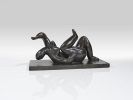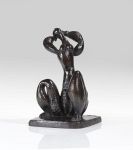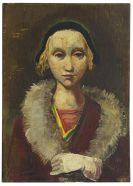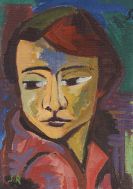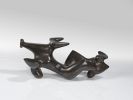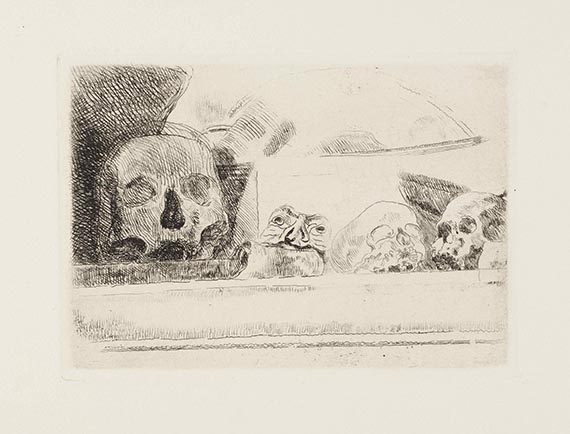
Amerigo Tot
Fehérvárcsurgó
1909 -
Rom
1984
Amerigo Tot (specifically Imre Tóth) was born on September 27, 1909, in Fehérvárcsurgó, Hungary. From 1926 until 1928, Tot attended the School for Applied Arts in Budapest, studying under Ferenc Helbing und György Leszkovszky.
Beginning in 1930, he attended the Bauhaus in Dessau. His teacher there was László Moholy-Nagy. After the Nazis came to power in 1933, Amerigo Tot moved to Rome and received a stipend from the Roman Hungarian Academy. In Rome, Tot participated in many design competitions for memorials. In 1943, Amerigo Tot began fighting with the Italian resistence movement. Tot's early graphical work shows the influence of the Bauhaus and his teachers Paul Klee and Moholy-Nagy. In his famous series "Kieselsteinfrauen" ("Pebble Women"), Amerigo Tot displayed his interest in grotesque configurations.
At the end of the Second World War, he became an advisor for the Roman Hungarian Academy. As a sculptor, he was recognized for the first time internationally for his work on the frieze for the Termini Station in Rome. Tot's deep interest in Renaissance art led him to develop a form language which played with elements of Renaissance art but also dexterously combined those with abstract form elements of Bauhaus.
In the early 1950's, Amerigo Tot constructed his first abstract works. In 1968, he returned to Hungary for a time and produced a series of sculptures which resemble mechanical devices and machines without representing any real tools. Around the same time in 1969, Tot created a traditional statue of the Madonna for his hometown Fehérvárcsurgó. Tot's eclectic work methods and his confident style decisions had an enormous impact on the sculpture in his homeland.
Amerigo Tot died on December 13, 1984, in Rome.
Would you like to sell a work by Amerigo Tot?
Infos for seller
